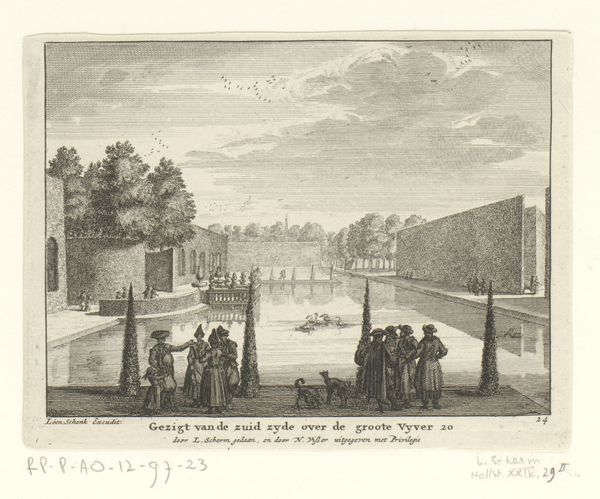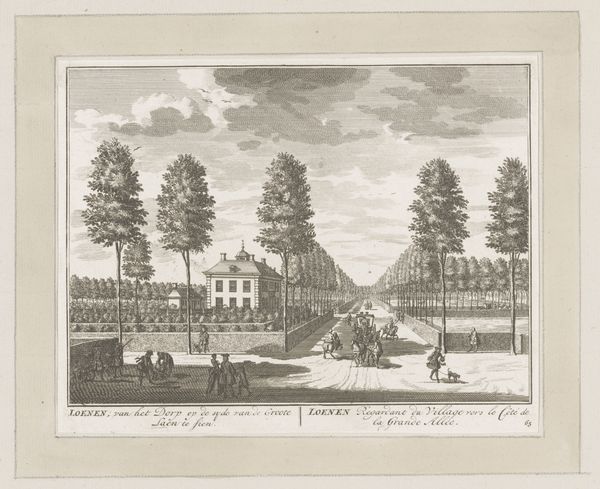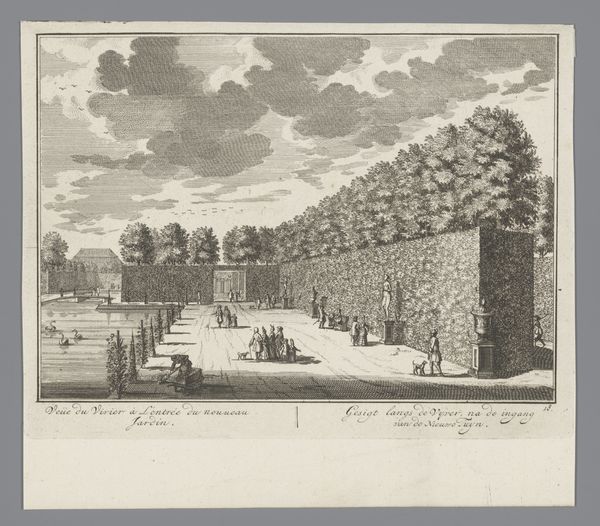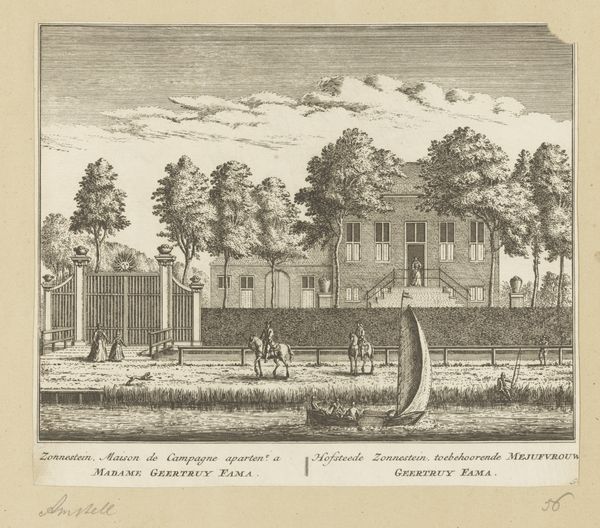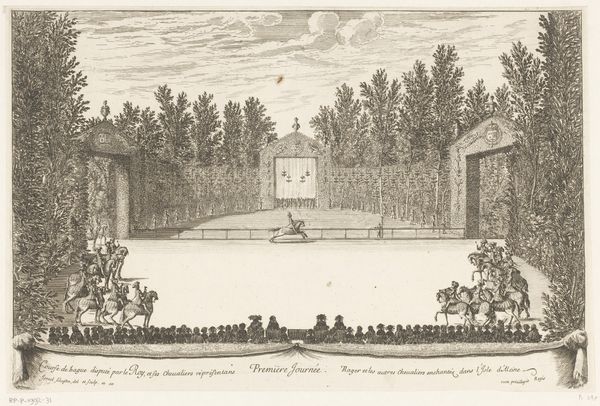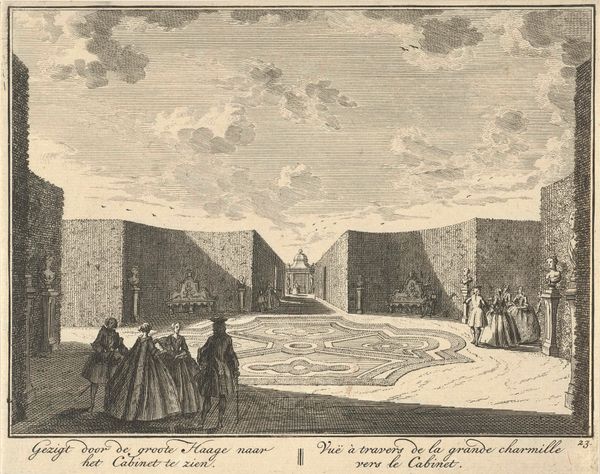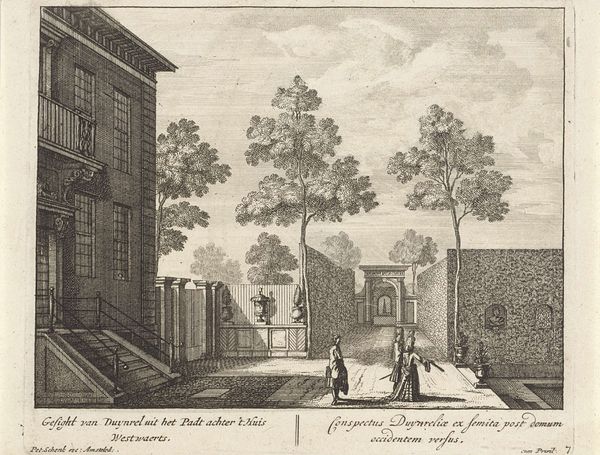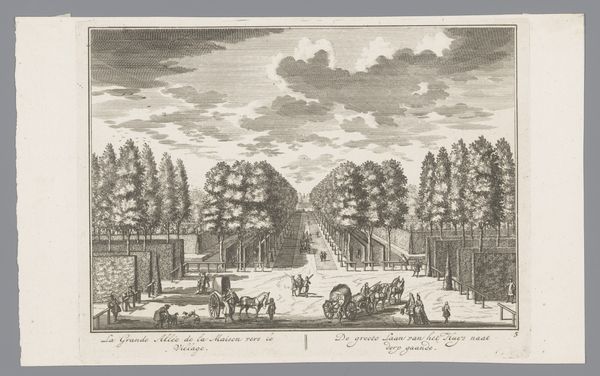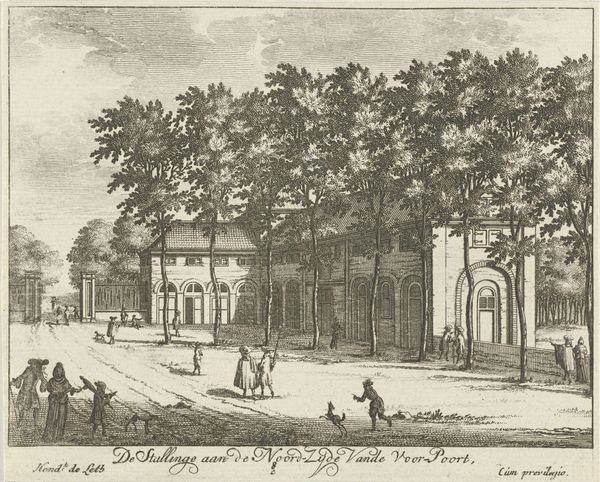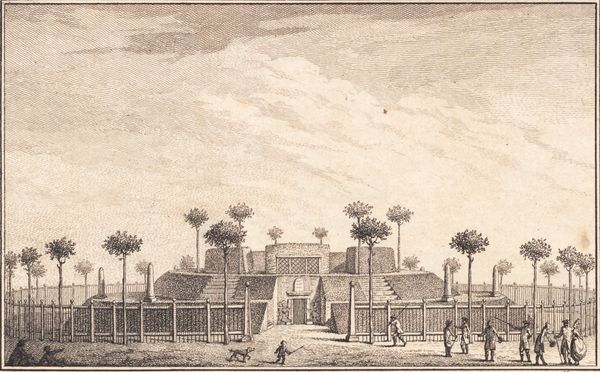
Gezicht op een deel van de tuinen op landgoed Clingendael Possibly 1682 - 1746
0:00
0:00
danielstopendaal
Rijksmuseum
drawing, paper, engraving
#
drawing
#
baroque
#
landscape
#
paper
#
cityscape
#
genre-painting
#
engraving
Dimensions: height 129 mm, width 166 mm
Copyright: Rijks Museum: Open Domain
Curator: Here we have "View of a part of the gardens at Clingendael Estate" attributed to Daniël Stopendaal, possibly created between 1682 and 1746. It’s an engraving on paper. Editor: It feels so meticulously planned and…reserved. Everything is carefully framed, the trees are pruned just so, even the clouds seem to obey the right angles. It creates an atmosphere of polite distance. Curator: Yes, Clingendael was indeed designed with specific social functions in mind. Its layout reflected the owner's status and served as a space for displaying power and control over nature itself. Gardens like these were extensions of the owner’s identity. Editor: The figures strolling through the garden, their postures and placement, it’s all part of constructing an image, isn't it? Almost like carefully placed pieces in a symbolic game. Is it about class, wealth? Curator: Exactly. Notice how they’re distributed throughout the composition? They are part of the landscape. The garden itself acted as a backdrop for social interactions, performances of status, negotiations of power... Clingendael was a stage set for elite social rituals. The symbolism embedded in the landscape enhanced the experience. Editor: I can almost feel the weight of those traditions looking at the ordered rows of trees and those stone busts. Everything must have been measured and considered... Curator: Absolutely. The artist meticulously depicted an idealized version of elite life, subtly reinforcing societal expectations and behaviors. Even in its apparent simplicity, the print communicates the sophisticated visual language understood by the social elite. Editor: There's something fascinating and yet a little suffocating about this vision. Curator: It reflects how landscape was used not only to evoke beauty but also to encode and broadcast messages about power, social order, and cultural values. Editor: It all feels more deliberate now, charged with symbolic meaning, beyond just being a nice landscape. Curator: Yes, by dissecting these layers, we begin to grasp how landscape imagery was deliberately shaped by social, cultural and political factors.
Comments
No comments
Be the first to comment and join the conversation on the ultimate creative platform.
